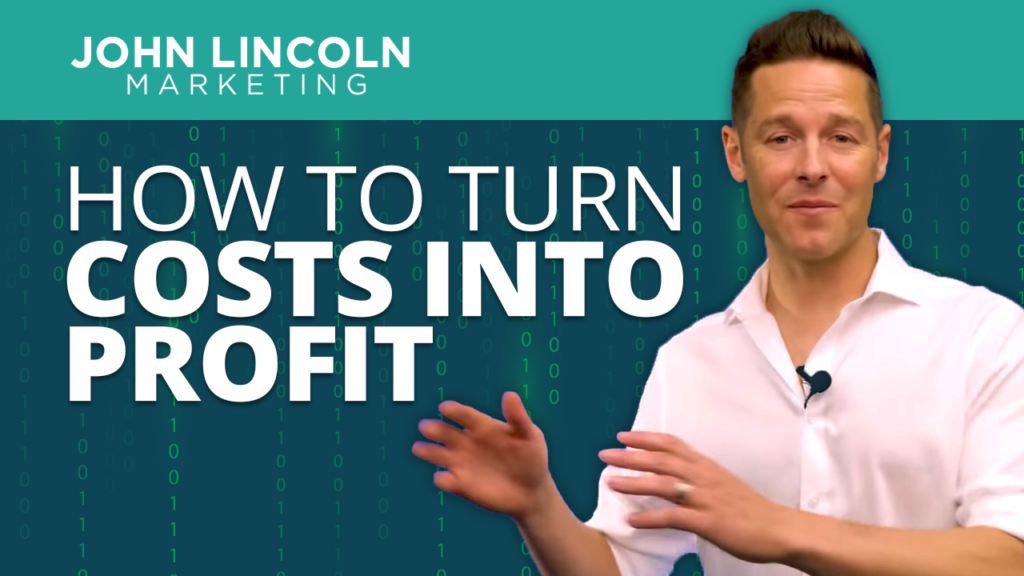
Top 16 Questions to Ask a PPC Company in 2024
In 2024, choosing the right PPC company is not just about spending your advertising budget. You want to make every cent count towards your business

Cost centers are just one of those necessary evils associated with running a business. After all, it takes money to make money.
From equipment maintenance costs to inventory to web hosting fees, automation tools, and your Google Ads budget, expenses are a reality of doing business.
That said, there may be some opportunities hiding in your monthly financials, whether that’s a hidden revenue stream, an opportunity to work smarter, or even a way to turn some expenses into profit.
In this article, I’m going to go over a simple strategy for turning costs into profit. Read on to learn more about my process.
If you’re used to measuring performance by glancing at sales and revenue numbers semi-regularly, you’re missing out on a lot of insights.
However, if you want to find opportunities to turn costs into profits, you’ll need to take a deeper dive.
Your monthly financials offer more insights than you might imagine, allowing you to identify gaps in your savings and expenses, and flag potential issues before they put your bottom line at risk.
Revenue is the money you’re bringing in from sales of services or goods. Total revenue represents your break-even point, meaning the first thing you’ll want to check out is that you’re earning more than you spend.
Common sense, right?
The next piece of the revenue puzzle is a bit more complicated. You’ll want to look at where your revenue is actually coming from.
Another area you’ll want to look at is what you’re making per client. While some clients might seem profitable, they might be costing you in terms of time or additional expenses.
You can calculate what you’re making per client by using the following two formulas.
Total Paid by Client – Total Project Expenses = Gross Profit per Project
Gross Profit / Total Hours Invested = Hourly Wage
Looking at how much you’re making per client can give you a sense of whether you need to raise prices or which types of customers to target with your lead gen efforts.
Customer acquisition cost is the amount you spend to get a new customer. Costs include salaries, marketing costs, and the time investment involved in creating marketing materials and selling the product.
The other side of this is avoiding churn. In other words, you might get new customers, but do they stick around? A low churn rate can make up for high acquisition costs, as repeat purchases will eventually cover those marketing costs.
How many accounts are past due? If a large share of your customers aren’t paying up, then that could mean trouble. First of all, are you following up on these accounts?
Slow turnover could be a sign that your customers lack financial stability, which puts your business at risk.
Return on assets (ROA) is a ratio that represents how much profit a company brings in compared to the value of its assets. As a point of reference, assets include everything from accounts receivable to equipment, vehicles, and inventory.
To calculate ROA, follow this simple formula:
Net Income / Total Value of Assets = ROA
A higher percentage is better, as it indicates that your company manages its assets responsibly—though it’s worth noting that company selling digital products/services will likely have fewer assets than a car dealer.
Take stock of the tasks that you and your employees perform each day and see if you can automate any of them.
What kind of tools might help you out here? A CRM, for example, can help you increase revenue by making actionable data more accessible.
While employees themselves are a significant expense, it might be worthwhile to hire someone that can help you identify new revenue streams and put them into action.
After you’ve established a baseline for your productivity and profitability, you’ll then want to start looking at potential ways to boost profits.
Keep in mind, you don’t necessarily need to create a whole new product line. In fact, you might just need to make a few tweaks.
What can you do to increase the dollar amount of each sale? Are there upsells, cross-sells, or add-ons that complement your primary revenue streams?
Let’s say you’re working as a content marketer, you might make a habit of recommending additional new services each time you bring on a new client. For example, if a client signs up for a monthly package of eight blog posts, you might offer to help them repurpose those posts into a YouTube series or offer a social media amplification service.
Again, let’s imagine that your primary source of income is through offering marketing services.
Consider how you might turn that service into a product–that might mean teaching other people how to do what you do, offering personalized insights, or downloadable assets.
Some examples include:
According to Gartner, the key thing here is to focus on selling assets that others find valuable. While that seems like a no-brainer, it means that you should spend some time researching whether your idea fills a gap in the market.
Another idea is offering one-off services like an SEO audit or detailed market research that helps clients get started with their own marketing efforts at a flat rate.
This might help you attract clients reluctant to commit to ongoing services, as they can quickly assess whether they can afford a one-off package and make a decision.
Another idea is looking toward a relationship-based sales model that aims to bring in new clients by offering a yearly subscription at a reduced rate. Keep in mind, you’ll need to pay close attention to customer satisfaction so that members renew their contracts when the time comes.
Turning your cost centers into a revenue stream isn’t always possible, many businesses have been able to recoup some of their expenses by thinking creatively.
Here are a few ways you might be able to get some of those losses back–or better yet, turn a profit.
Sometimes the answer to improving your bottom line is right there, hiding in your routine reports. The tips I’ve outlined above prove that driving up your profits doesn’t necessarily mean you need to completely reimagine your business model.
Welcome to John Lincoln’s personal website. You can learn about John Lincoln’s books, films, book him to speak and contact him. John is directly associated with many of the businesses mentioned on this website and freely discloses this information.

John Lincoln is CEO of Ignite Visibility, one of the top digital marketing agencies in the nation. Ignite Visibility is a 6x Inc. 5,000 company. Ignite Visibility offers a unique digital marketing program tied directly to ROI with a focus on using SEO, social media, paid media, CRO, email and PR to achieve results. Outside of Ignite Visibility, Lincoln is a frequent speaker and author of the books Advolution, Digital Influencer and The Forecaster Method. Lincoln is consistently named one of the top digital marketers in the industry and was the recipient of the coveted Search Engine Land “Search Marketer of The Year” award. Lincoln has taught digital marketing and Web Analytics at the University of California San Diego since 2010, has been named as one of San Diego’s most admired CEO’s and a top business leader under 40. Lincoln has also made “SEO: The Movie” and “Social Media Marketing: The Movie.” His business mission is to help others through digital marketing.
Want to get in touch with John Lincoln? Click Here To Reach Out.

In 2024, choosing the right PPC company is not just about spending your advertising budget. You want to make every cent count towards your business

Whether you’re a seasoned marketer or just starting out, conversion rate optimization (CRO) is a powerful tool that can boost your sales, leads, and overall

Feeling overwhelmed by the sea of SEO companies out there? You’re not alone! Choosing the right partner is crucial for achieving your online marketing
 How To Get 50+ SEO Links In 30 Days
How To Get 50+ SEO Links In 30 Days I wanted to share my current process for link building. Linking is one of those things I feel like almost no